You can see it; the ‘fire’ in his photographs
“I consider Sri Lanka as one of the last Edens left on earth and wildlife as its true children. So I want to make my maiden book a lasting tribute to the beauty of Sri Lanka’s natural heritage,” says Rajiv Welikala who will launch his coffee table book along with his wildlife photography exhibition on December 5.
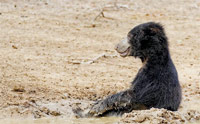
Seated bear in Yala National Park
“Children of Eden- a tribute to the wildlife of Sri Lanka”, the coffee table book contains 120 of the best images Rajiv has captured over 17 years.
The images cover a vast variety of species, from the more charismatic and iconic members of Sri Lankan wildlife such as leopards, elephants, bear, and whales to smaller members such as birds and lizards. A few landscape shots illustrate what this Eden looks like.
Rajiv’s special interest in tuskers is evident as the book features more than 10 photos showcasing some of Sri Lanka’s magnificent tuskers such as the elusive Wilpattu tusker ‘Megha’, Kawdulla’s giant tusker ‘Enigma’ and the late Siyambalangamuwa tusker.
The young tuskers and playful elephant calves are truly Children of Eden.
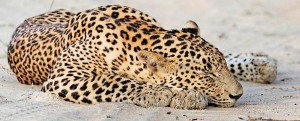
Sleeping leopard on white sand
We see some fine wildlife photography regularly. So how do you take a photograph that still impresses? Writing the Foreword to ‘Children of Eden”; promoter of Sri Lanka’s wildlife and well known wildlife photographer Gehan De Silva Wijeyeratne answers this question.
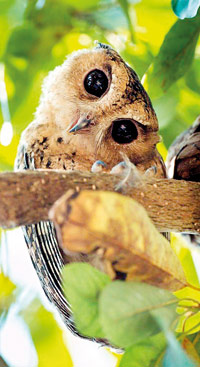
Who is more curious ? The Owl or the photographer?
“It is about light, composition and the right moment. Some things never change and the elements of what makes an arresting image stand true.
Whilst technology and the strengthening of disposable incomes may make access to photographic opportunities more democratic, great photography still comes from ‘fire’–the fire within the soul, one that burns intensely, with a passion for nature and a commitment to seek, to wait, and to take great photographs”.
Mr. Wijeyeratne adds that the answer to the above question lies within images of Rajiv’s boook.
A Thomian, Rajiv says, “Joining the college’s Wildlife Society was a turning point in my life, which would determine my lifestyle and passion to this day.
The club would organise a camping excursion to a national park every term holiday. I had always wanted to capture the moments I experienced in the wild and show it to my family back home. This motivated me to start photography at a young age.”
Rajiv received his first camera, a second hand Yashica when he was 13. “I practised and honed my skills in photography over the years, as well as gradually upgrading my camera equipment thanks to hand me downs from my father.
I try to learn from the work of seasoned photographers, but most ideas come about by trial and error. Every trip into the wild teaches me something new, and I firmly believe that we never stop learning,” says Rajiv.
He also advises the new generation who aspire to be wildlife photographers to think differently and try out new ways to capture those moments in the wild.
However, the welfare of the wildlife must come first and it is important not to disturb the animal. Follow wildlife photography ethics even if it means compromising the best photo opportunity, Rajiv advises.
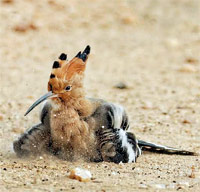
Eurasian Hopooe - You can sense the puff of dust as it dust bathes
Many photographers rarely take the effort to describe their interesting experiences in the wild, but Rajiv shares them through his blog http://wildlifediaries.blogspot.com .
The book will also feature many interesting anecdotes and stories of Rajiv’s experiences, adventures and encounters throughout the years, which makes interesting reading for wildlife enthusiasts and casual readers alike.
The book launch and exhibition of the ‘Children of Eden’ will be held on December 5 from 8:30 a.m. to 8 p.m. at the Harold Peiris Gallery, Lionel Wendt. The exhibition is open to the public.
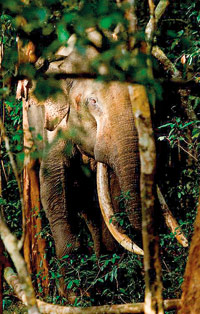
Majestic and wild: ‘Megha’ – The elusive Wilpattu Tusker
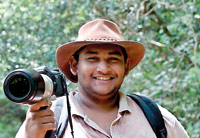
Rajiv Welikala


